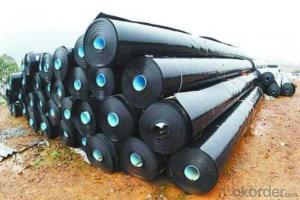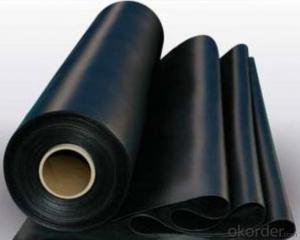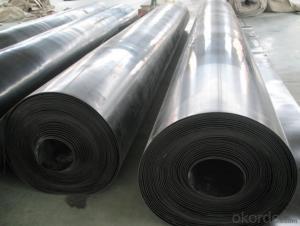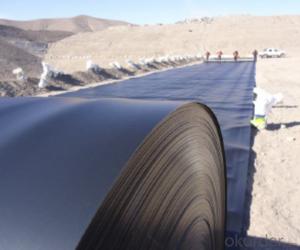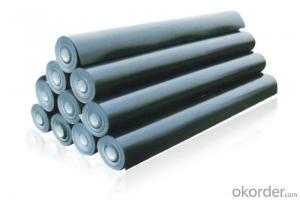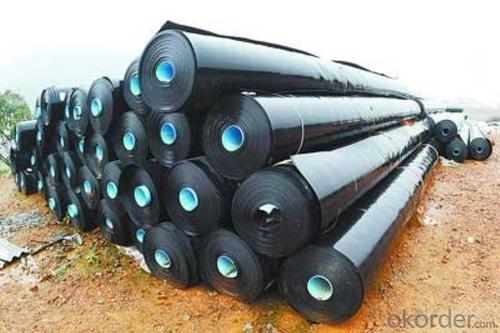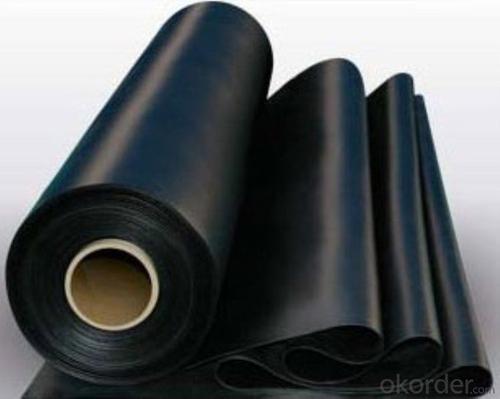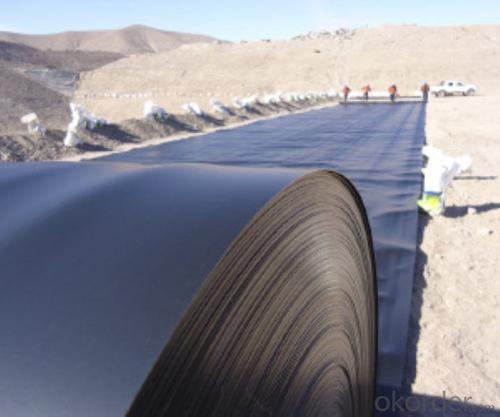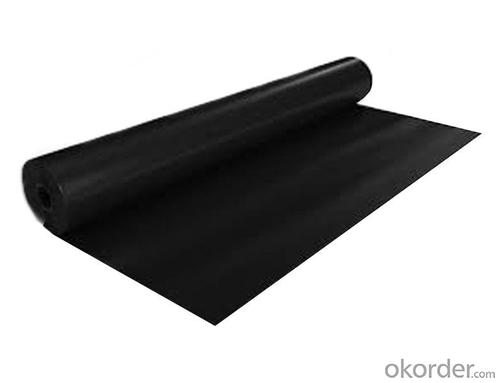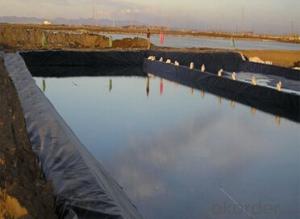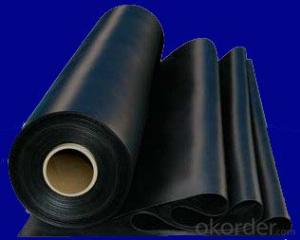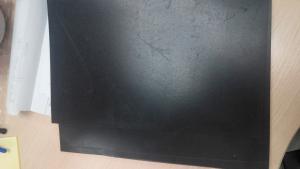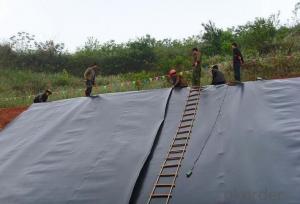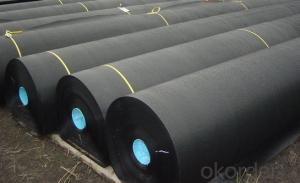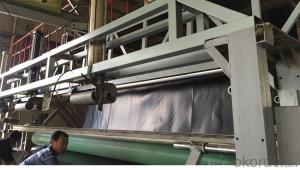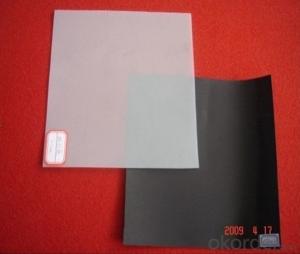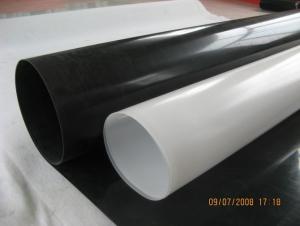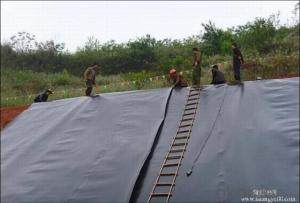HDPE Textured Geomembrane 0.5mm-1.5mm for Construction
- Loading Port:
- Qingdao
- Payment Terms:
- TT OR LC
- Min Order Qty:
- 8000 m²
- Supply Capability:
- 100000 m²/month
OKorder Service Pledge
OKorder Financial Service
You Might Also Like
Geomembrana 0.5mm-1.5mm of LDPE for The Constraccion
Description Of Geomembrana 0.5mm-1.5mm of LDPE for The Constraccion
Geomembrane is a plastic Film Raincoat. Currently, the main raw materials of Waterproof Geomembrane are mainly Plastic polyvinyl chloride (PVC) and polyethylene (PE), Eva (ethylene / vinyl acetate Copolymer), also designed for Special use in applications of Tunnel (ECB Ethylene vinyl acetate Modified Asphalt mixture Geomembrane).
Main Features of Geomembrana 0.5mm-1.5mm of LDPE for The Constraccion
molecular structure
Polyethylene (PE) geomembrane is divided into low-density polyethylene (LDPE) geomembrane
linear low density polyethylene (HDPE) geomembrane
Applications of Geomembrana 0.5mm-1.5mm of LDPE for The Constraccion
1.HDPE geomembrane is applicable to environmental protection and sanitation: such as landfill, sewage treatment plant, power plant adjustive pool, industrial, hospital solid waste;
2.HDPE geomembrane is applicable to hydraulic engineering: such as seepage control, plugging, reinforcement for rivers, lakes and reservoirs and dams, drainage seepage control, vertical core wall, slope protection, etc.
3. HDPE geomembrane's applications in municipal engineering: subway, underground works of the building, planting roof, roof garden, sewage pipe seepage control;
IMages of Geomembrana 0.5mm-1.5mm of LDPE for The Constraccio
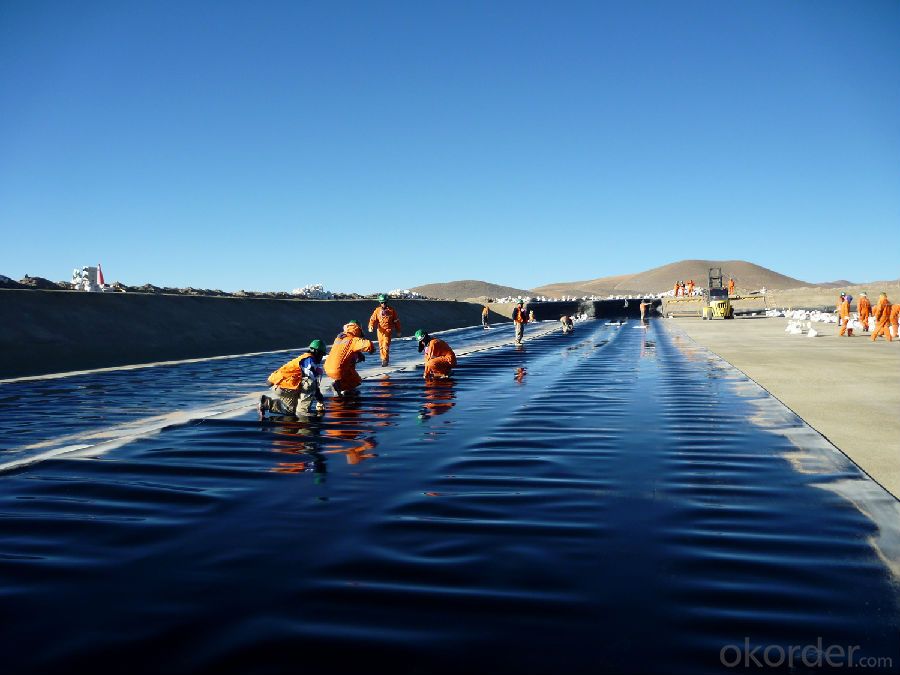

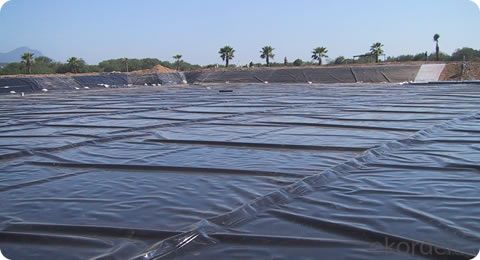
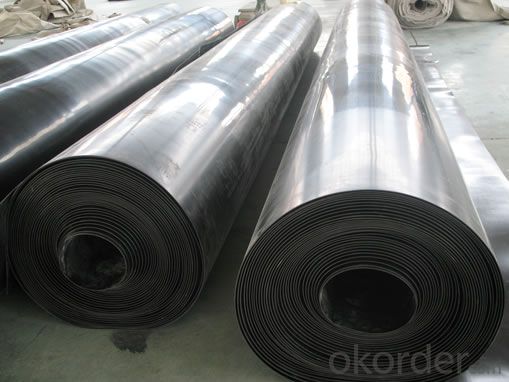
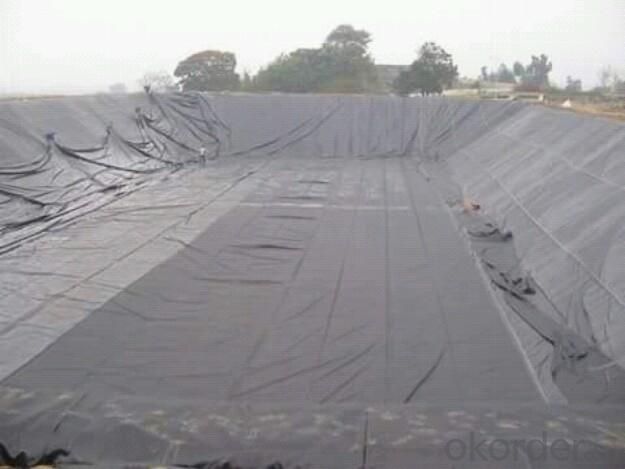
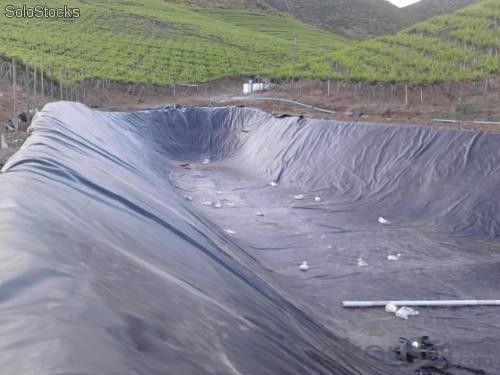

FAQ:
1. What are we supplying?
We are specialized in producing .geotextile , geocell, geogrid, geomembrane
2. How Many years experience do we have?
We have been exported to more than 15 countries in the past 10 years.
3. How long do we usually reply your request?
We always reply our customer within 12 hours.
- Q: What are the common applications of geomembranes?
- Geomembranes have a wide range of common applications, including environmental protection, waste containment, water and wastewater management, mining and mineral extraction, agriculture, and civil engineering projects.
- Q: What is the recommended thickness of HDPE membranes when the membrane is applied in landfills? How to decide the thickness of the membranes?
- 1.5mm is required in urban construction ministerial standard. 2.0mm is required in national standard. You can chose one of them according to the requirements of design.
- Q: What are the design considerations for geomembranes in landfill construction?
- Some design considerations for geomembranes in landfill construction include selecting the appropriate material based on chemical resistance and durability, ensuring proper installation techniques to minimize potential damage or leaks, considering the slope and stability of the landfill to prevent liner failure, and incorporating a robust monitoring and inspection plan to detect any potential issues or failures. Additionally, factors such as climate, site conditions, and regulatory requirements also need to be taken into account during the design process.
- Q: How do geomembranes contribute to the prevention of soil erosion in mining operations?
- Geomembranes contribute to the prevention of soil erosion in mining operations by providing a protective barrier between exposed soil and the elements. These impermeable membranes are installed to line surfaces such as mine pits, tailings ponds, and waste storage facilities, effectively sealing off the soil from water and wind erosion. By minimizing the contact between soil particles and external forces, geomembranes help maintain the stability of slopes and prevent the loss of valuable topsoil, reducing the environmental impacts associated with mining activities.
- Q: What are the advantages of geotextiles?
- They are easy to use. It is hard to block the apertures of geotextiles because the net?structure of geotextiles has excellent adaptability and movability. So geotextiles have good water permeability. They can form drainage channels inside the soil mass. Impervious geotextiles have excellent water permeability, filterability and durability. They are widely used to construct railways, highways, stadiums, dams, water conservancy facilities, tunnels, coastal mud flats and for environmental protection. Geotextiles can be divided into two categories, namely the staple fiber acupuncture non-woven geotextile and film yarn woven geotextile. Geotextiles have excellent breathability, water?permeability, acid resistance, alkali resistance, worm resistance and oxidation resistance. Geotextiles can improve the strength of extension and deformation resistance, efficiently disperse, transfer or resolve the concentrated stress to protect the soil mass from damage of external force. So they can improve the stability of the buildings and the quality of soil mass. Geotextiles can be divided into three categories according to craft, namely the filament geotextile, woven geotextile and singeing geotextile.
- Q: What is the role of the base film
- Best to use a base film, if the direct wallpaper paste, rubber adhesive is very strong, it is possible to directly attached to the wall of the grass roots to pull off, if you brush a layer of the base film (also called wallpaper partner), the base film can close wall, waterproof, increase adhesion of the walls and wallpaper, brush one day after the wallpaper, etc., no problem
- Q: Can geomembranes be used in wastewater treatment lagoon covers?
- Yes, geomembranes can be used in wastewater treatment lagoon covers. Geomembranes are impermeable liners that can effectively contain and prevent the leakage of wastewater, making them suitable for use in lagoon covers. They provide a barrier that helps protect the surrounding environment from potential contamination and ensure the proper treatment and management of wastewater.
- Q: Should the plastic film of mattress be removed?
- You can take followings as a reference. It should be removed or it will impede the air circulation of the mattress which can lead to mildew, bacteria and acarid. This problem can be settled when the film is removed. Then don't block the venthole of mattress. The mattress can not be cleaned by water. So it is better to use quilt cover that can be washed frequently to keep the mattress clean. The regular retroflexion of the mattress can increase its service life.
- Q: What is the lifespan of a geomembrane?
- The lifespan of a geomembrane can vary depending on various factors such as the quality of the material, installation methods, exposure to environmental conditions, and maintenance. However, on average, a properly installed and maintained geomembrane can last anywhere from 20 to 30 years.
- Q: Why pvc plastic wrap smells?
- The notable features of PE plastic wrap are: PE plastic wrap is extensively used , PE plastic wrap can pack fatty foods, meanwhile PE plastic wrap can be heated in a microwave oven, but the temperature shall not exceed 110 degrees Celsius. In addition, the tips of differentiating different types of plastic wraps: 1, Check transparency. PE plastic wrap is less transparent, while PVC PVC plastic wrap is more transparent. 2, strain relief test. PE plastic wrap has smaller tensil force, while PVC plastic wrap has larger one. 3, fire experiments. PE plastic wrap is easy to burn, will drop oil, and smells like candle; PVC plastic wrap produces black smoke while burning, smelling pungent. 4, The self-adhesive of PVC plastic wrap is much stronger than PE plastic wrap.
Send your message to us
HDPE Textured Geomembrane 0.5mm-1.5mm for Construction
- Loading Port:
- Qingdao
- Payment Terms:
- TT OR LC
- Min Order Qty:
- 8000 m²
- Supply Capability:
- 100000 m²/month
OKorder Service Pledge
OKorder Financial Service
Similar products
Hot products
Hot Searches
Related keywords
